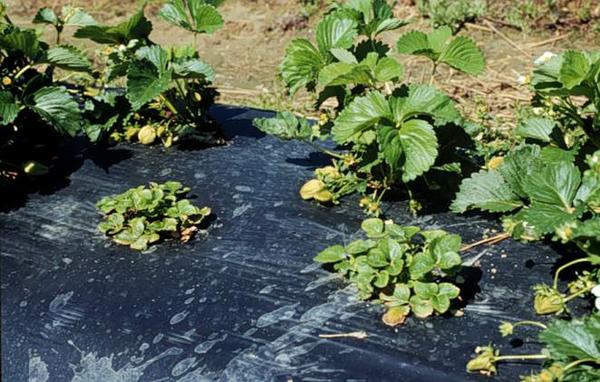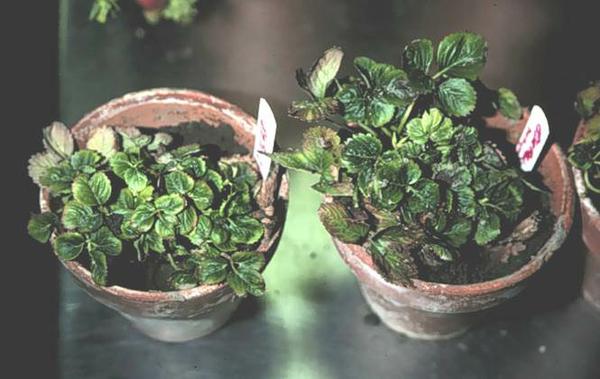Phytoplasma
- Type
- Disease
- Leaf Condition
- Distorted, Stunted
- Leaf Color
- Interveinal chlorosis
- Leaf Location
- Young
- Fruit Condition
- Deformed
- Fruit Size
- Small
- Petioles Condition
- Short or stunted
- Plant Size
- Stunted
- Field Distribution
- Random
- Season
- Post transplant, Early spring, Pre harvest, Harvest
- Cropping System
- Annual plasticulture
Introduction, Symptoms and the Pathogen
Phytoplasmas are organisms that multiply in the phloem of strawberry plants and are carried from plant-to-plant by leaf hoppers (vectors). The disease occurs at very low levels in annual fruit production systems and infected plants are associated with plant source. First symptoms observed include plant stunting and the development of multiple crowns (Figure SS-1; Figure SS-2). The pathogen can also cause plants to grow oddly – leaves may grow from fruit (phyllody; Figure SS-3). Levels are so low that control recommendations are not warranted. It is not important to remove these plants in annual systems since disease spread does not occur within the field or during the production cycle. These pathogens are easily transmitted through tissue culture and any vegetative propagation program. Therefore, it is essential that plants in a certification program be evaluated to ensure they are phytoplasma free. This can be accomplished using polymerase chain reaction (PCR). Protocols have been established for isolation of DNA from plants, including DNA from pathogens such as the phytoplasmas. The DNA is amplified using PCR and then the DNA is visualized using agarose gel electrophoresis. DNA methods are also used to identify the genotypes of the pathogen.








